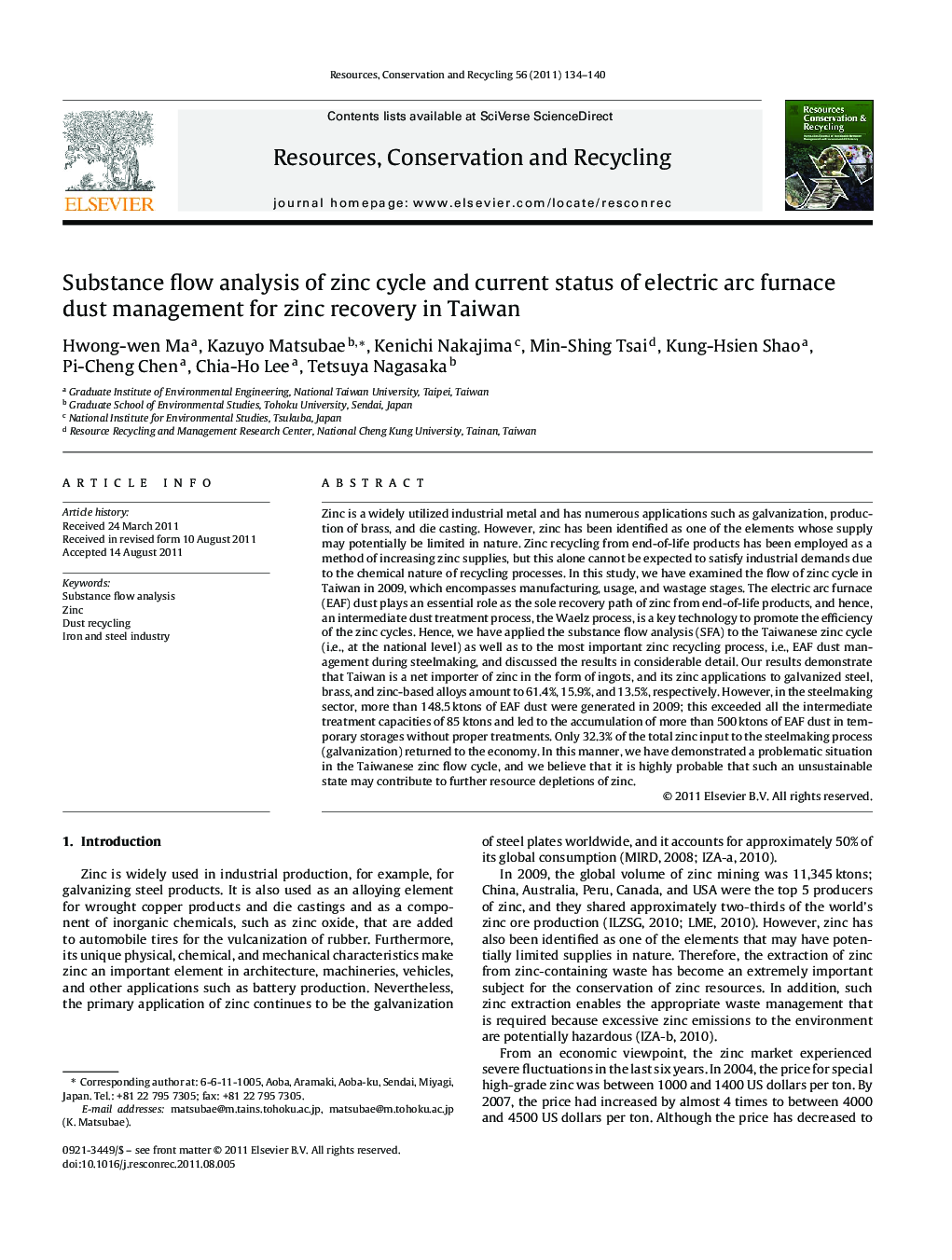| Article ID | Journal | Published Year | Pages | File Type |
|---|---|---|---|---|
| 1063351 | Resources, Conservation and Recycling | 2011 | 7 Pages |
Zinc is a widely utilized industrial metal and has numerous applications such as galvanization, production of brass, and die casting. However, zinc has been identified as one of the elements whose supply may potentially be limited in nature. Zinc recycling from end-of-life products has been employed as a method of increasing zinc supplies, but this alone cannot be expected to satisfy industrial demands due to the chemical nature of recycling processes. In this study, we have examined the flow of zinc cycle in Taiwan in 2009, which encompasses manufacturing, usage, and wastage stages. The electric arc furnace (EAF) dust plays an essential role as the sole recovery path of zinc from end-of-life products, and hence, an intermediate dust treatment process, the Waelz process, is a key technology to promote the efficiency of the zinc cycles. Hence, we have applied the substance flow analysis (SFA) to the Taiwanese zinc cycle (i.e., at the national level) as well as to the most important zinc recycling process, i.e., EAF dust management during steelmaking, and discussed the results in considerable detail. Our results demonstrate that Taiwan is a net importer of zinc in the form of ingots, and its zinc applications to galvanized steel, brass, and zinc-based alloys amount to 61.4%, 15.9%, and 13.5%, respectively. However, in the steelmaking sector, more than 148.5 ktons of EAF dust were generated in 2009; this exceeded all the intermediate treatment capacities of 85 ktons and led to the accumulation of more than 500 ktons of EAF dust in temporary storages without proper treatments. Only 32.3% of the total zinc input to the steelmaking process (galvanization) returned to the economy. In this manner, we have demonstrated a problematic situation in the Taiwanese zinc flow cycle, and we believe that it is highly probable that such an unsustainable state may contribute to further resource depletions of zinc.
► We examined the flow of zinc cycle in Taiwan in 2009. ► 61.4%, 15.9%, and 13.5% of zinc was applied to galvanized steel, brass, and zinc-based alloys, respectively. ► 85 ktons of EAF dust was exceeded all the intermediate treatment capacities. ► More than 500 ktons of EAF dust was accumulated in temporary storages without proper treatments. ► Only 32.3% of the total zinc input to the steelmaking process returned to the economy.
